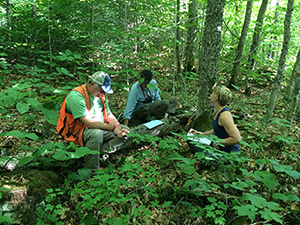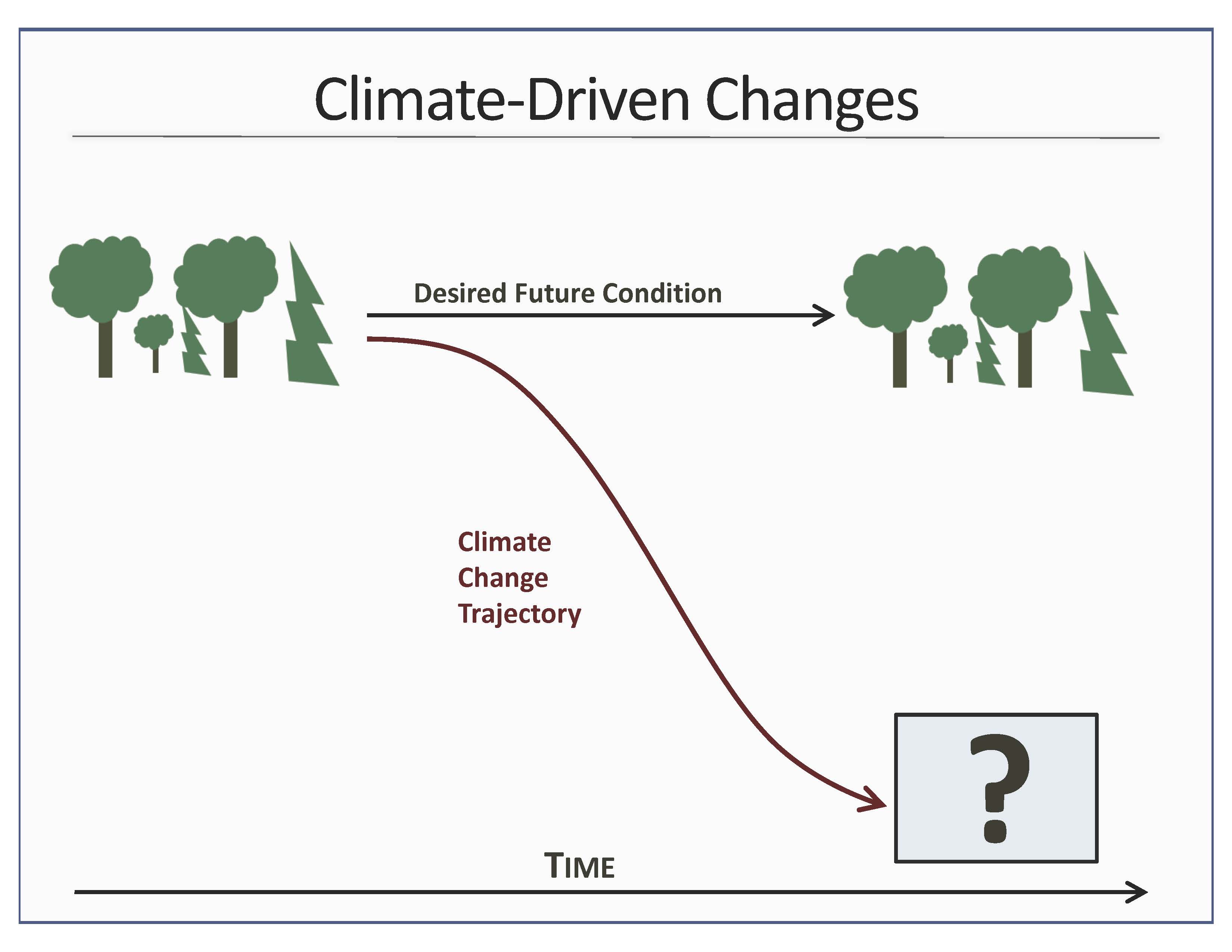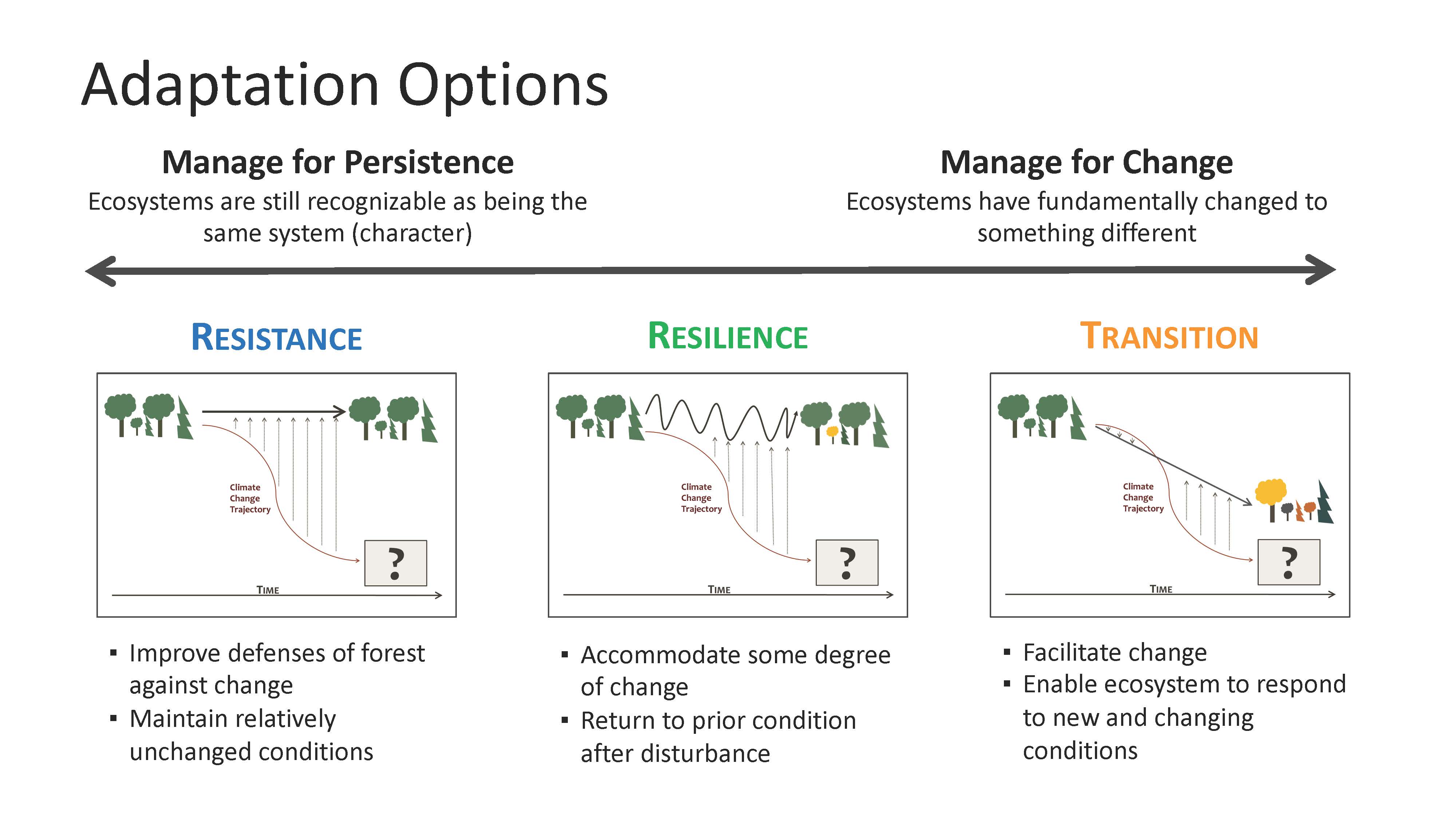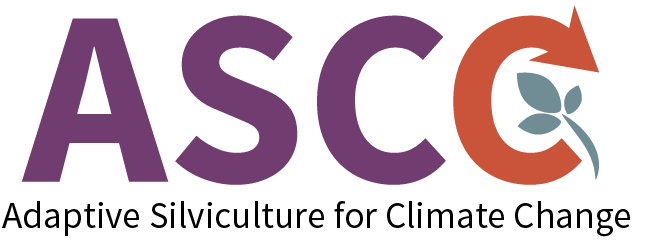What is Silviculture?

Photo Credit: Molly Roske
The Society of American Foresters Dictionary of Forestry defines silviculture as “the art and science of controlling the establishment, growth, composition, health, and quality of forests and woodlands to meet the diverse needs and values of landowners and society on a sustainable basis.” Silvicultural treatments span a wide array of approaches, including (but not limited to) thinning, regeneration harvests, planting, site preparation, pruning, and prescribed burning. These approaches make up the toolbox that foresters utilize in managing for landowner and society’s values, such as wildlife habitat, timber, water resources, recreation, and carbon sequestration, among many others.
To develop the ASCC study, we brought together a core team of scientists and managers interested in integrating climate change adaptation into their silvicultural planning and on-the-ground management actions at each site. The big question ASCC is poised to answer is: What actions can be taken to enhance the ability of a system to cope with change while continuing to meet management goals and objectives?
Silviculture and Climate Adaptation

Articulating a desired future condition (DFC) that aligns with management goals is a crucial step when developing silvicultural prescriptions. Inherent to developing DFCs is an understanding of how vegetation develops over time, including response to disturbances and silvicultural treatments. However, our understanding of the future impacts of a changing climate on forest development is limited. Climate change presents an ongoing challenge to management. To accommodate the uncertainty surrounding climate change impacts, silviculturists need to consider a range of potential futures in decision-making to best manage forest resources for future generations.
Adaptation actions are designed to specifically address climate change impacts and vulnerabilities to meet management goals and objectives. This might mean continuing management practices that are currently taking place, or it could involve trying something new and different to address climate change. The ASCC experiment is looking at a spectrum of adaptation options ranging from resistance to transition.
Climate Change Adaptation Options
Which approach best prepares forest ecosystems for climate change?
Adaptation options occupy a continuum of management goals related to their levels of desired change:

- Resistance –maintain relatively unchanged conditions over time
- Resilience – allow some change in current conditions, but encourage eventual return to original conditions
- Transition – actively facilitate change to encourage adaptive responses
The ASCC project explicitly tests these three adaption options, linking them to site-specific management objectives, desired future conditions, and silvicultural actions. Our working definitions below closely follow Millar et al. 20071.
Resistance:
Managing for resistance means improving the defenses of the forest against anticipated changes, or directly defending the forest against disturbance, in order to maintain relatively unchanged conditions. The resistance option typically involves investing resources into maintaining what is currently on the landscape. Over time, the effort and resources needed to maintain forests within developmental pathways that assume a static environment, will increase – meaning, this approach could become increasingly costly as climate changes into the future. The resistance option is best utilized as a short-term strategy or to maintain resources of high cultural, economic, or ecological value.
Resilience:
Managing for resilience means accommodating some degree of change, but encouraging a return to a prior condition or an identified benchmark condition following disturbance. Resilience treatments in forest ecosystems are aimed at coping with disturbance. A resilient ecosystem is often immediately impacted by low intensity disturbances, but can quickly recover to conditions resembling those pre-disturbance. In other words, resilient ecosystems are very elastic. In the ASCC study, resilience treatments are designed to enable forest stands to rebound from disturbances and tolerate a wider range of climate shifts. Similar to the resistance option, the effort and resources needed to maintain or improve resilience in forest ecosystems may become more difficult and require more investment over time.
Transition:
Finally, managing for transition (or response) means intentionally accommodating change and enabling ecosystems to adaptively respond to changing and new conditions. The transition adaptation option requires making an intentional, directed change to an ecosystem, which can include trying novel approaches in an effort to identify which ones best meet management objectives under future conditions. The transition option may require more effort upfront to begin moving a stand toward a future-oriented desired future condition that is defined within the context of projected future climate. Through this approach, ecosystem adaptive capacity will likely increase, and the effort needed to maintain that desired condition will potentially decrease over time. The end result will be a forest that may look different from current conditions but still provides critical ecosystem functions and services.
1 Millar, C.I., N.L. Stephenson, and S.L. Stephens. 2007. Climate change and forests of the future: Managing in the face of uncertainty. Ecol. Appl. 17(8): 2145-2151.

